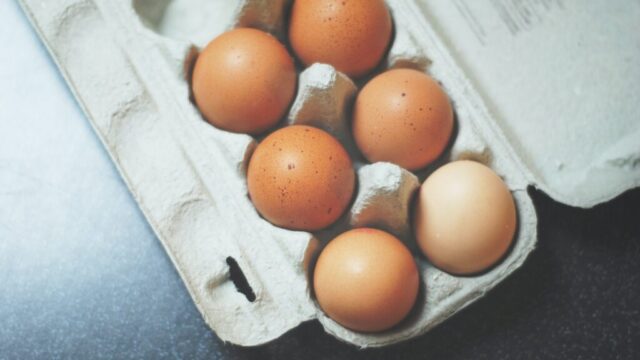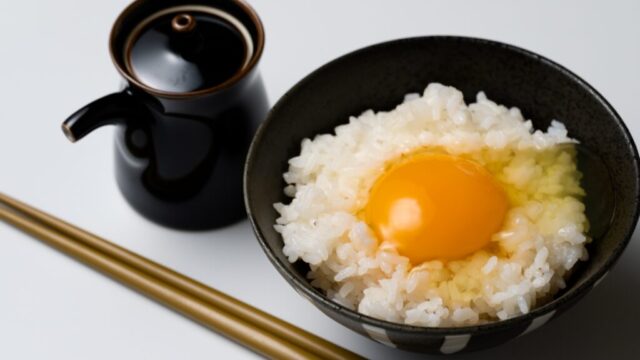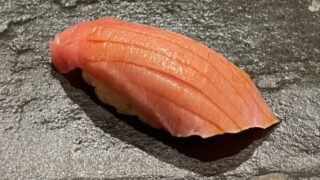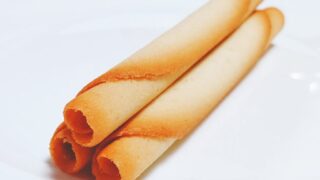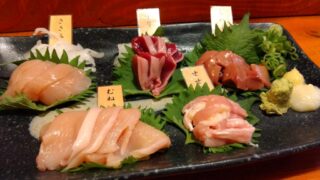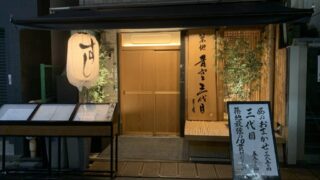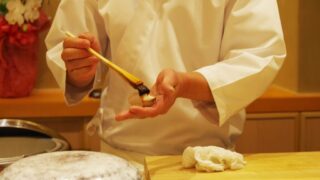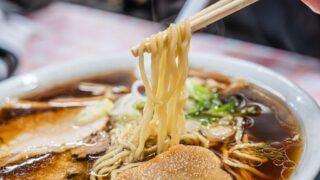Slurping is one of the distinctive cultural practices in Japan. While it might appear impolite or uncomfortable to those from other countries, it’s quite normal for Japanese people. In fact, not slurping while eating dishes like soba or ramen might even seem unusual to us.
In this article, I would like to discuss the concept of “slurping” in Japan.
What is Slurping?
Slurping involves a specific inhalation technique. For instance, when slurping noodles, you draw the noodles into your mouth as if sucking them in. During this process, a slight gap is created between the mouth’s opening and the noodles, allowing air to pass through, which creates a distinctive sound. Achieving the right balance between this gap is crucial; it should not be too large to avoid dropping the noodles while not too small to let air flow. Mastering this technique can be challenging for foreigners.
Purpose of Slurping
I believe the following are the reasons behind the establishment of the slurping culture:
Suitable for Chopsticks
Japanese dining culture revolves around using chopsticks, and when eating noodle dishes with chopsticks, it can be more efficient to slurp. This might be the major reason for the prevalence of the slurping culture.
Temperature Regulation
Especially when enjoying hot noodle dishes or beverages, slurping allows room-temperature air to mix in, lowering the overall temperature. This makes the food or drink easier to consume. You’ll notice a significant temperature difference between slurping and not.
Enhanced Aroma
Inhaling air along with food or drink helps spread their aroma throughout the mouth, which can heighten the flavor and be appreciated even through the sense of smell, a concept commonly discussed in the culinary world.
Is It Rude Not to Slurp? Can Some Japanese Not Slurp?
There are Japanese individuals who cannot or do not prefer to slurp. Therefore, when entering ramen or soba restaurants, you don’t need to worry if you’re not comfortable with slurping. It is not considered impolite at all. You are not obligated to slurp; eat in a way that is comfortable for you. If needed, you can ask for a fork, which many restaurants should have available. Requesting a fork is not considered impolite either.
What We Don’t Slurp
Even with noodles and hot beverages, there are items that Japanese people often don’t slurp. For example, spaghetti, though a familiar dish in Japan, is typically eaten with forks rather than slurped. This can depend on the upbringing and education people received at home. While some might slurp spaghetti in more casual establishments, you’ll rarely see it in high-end restaurants.
Similarly, when having western soups with a spoon, many of us were taught not to make noise while eating at home during our childhood. This behavior is rarely observed in upscale dining settings as well. On the other hand, when we have Japanese soups like miso soup, we usually slurp.
On a personal note, I pay attention not to make noise when drinking tea or coffee. Slurping is sometimes one of my bad habits.
Tips for Slurping
I was once asked by someone from overseas about the technique for slurping noodles, but I couldn’t provide a perfect answer. One important point is to angle your face downward, but beyond that, it’s mostly about practice in my opinion.
Beware of Spills
When attempting to slurp noodles, be cautious about the possibility of soup splattering onto your clothes. Especially if you’re not accustomed to it, there’s a chance that it might splash more than you imagine. Many ramen shops provide disposable paper aprons, so feel free to use them if necessary.


